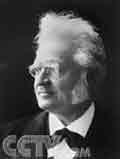1) Signal-noise ratio
SN比
2) Signal to noise ratio
信噪(SN)比
3) signal noise ratio gradients
SN比梯度
4) SN ratio method
SN比方法
1.
In this paper, the dynamic response surface method has been employed for the robust design of a thermal expansion instrument; and then the comparison between Taugchi s method and the response surface method has been made; the result has shown that the response surface method has more advantages than the SN ratio method and is an effective approach to the improvement of Dr.
首先利用了动态特性的响应曲面方法对某热膨胀仪进行了稳健实验设计;然后把得到的优化结果与利用田口的SN比方法得到的优化结果进行了比较,结果表明响应曲面方法较SN比方法有很多优良性质,是对田口玄一博士的SN比方法的一种有效改进途径。
5) Signal-to-Noise Ratio
信噪比(SN比)
6) SN-ratio experimental design
SN比试验设计法
1.
Based on SN-ratio experimental design, This paper analyzes the law of every factor's effect on surface roughness of grinding and looks for the best grinding condition with which can be obtained the minimum surface roughness.
通过SN比试验设计法,就各因素对磨削表面粗糙度的影响规律加以分析,并寻求能够获得最小表面粗糙度的最佳加工条件,同时提出预测表面粗糙度的方法,并通过实验加以验证。
参考词条
补充资料:比昂斯滕·比昂松

比昂斯滕·比昂松
比昂斯滕·比昂松(1832~1910)挪威戏剧家、诗人、小说家。主要作品有剧作《皇帝》、《挑战的手套》,诗集《诗与歌》等。1903年作品《挑战的手套》获诺贝尔文学奖 。获奖理由: “他以诗人鲜活的灵感和难得的赤子之心,把作品写得雍容、华丽而又缤纷”。
说明:补充资料仅用于学习参考,请勿用于其它任何用途。